Vietnam’s northern frontier reveals a different face during the rainy season, transforming Ha Giang’s limestone peaks and valleys into misty, emerald landscapes. This dramatic shift brings both challenges and unique beauty to the famous Ha Giang Loop. While some travelers avoid the wet months, others discover that rain enhances Ha Giang’s natural splendor, creating photogenic scenes of terraced fields glistening under moisture-laden skies. Phieu Travel has explored these roads through all seasons, and we’re here to guide you through everything you need to know about experiencing Ha Giang’s rainy season safely and memorably.
1. Overview of Ha Giang Loop in Rainy Season
The rainy season in Ha Giang brings dramatic transformation to Vietnam’s northernmost province. This period of increased precipitation typically stretches from May through September, with rainfall patterns changing the region’s atmosphere, landscape, and daily rhythms. Unlike the short, intense downpours of southern Vietnam, Ha Giang’s rain often arrives as prolonged drizzle or steady showers, creating the misty mountain scenes that have inspired poets and photographers alike.
During these months, temperatures remain relatively warm, ranging from 24-32°C (75-90°F) during the day and dropping to 18-22°C (64-72°F) at night. The combination of warmth and moisture creates a humid environment, where clouds cling to mountain peaks and valleys fill with morning mist. This weather pattern creates the perfect conditions for lush vegetation, with rice terraces at their greenest and waterfalls at their most powerful.
The impact of the rainy season varies significantly across Ha Giang’s diverse topography. While the provincial capital might experience moderate rainfall, the higher elevations along the loop, particularly around Dong Van and Meo Vac, can see heavier precipitation and occasional fog that dramatically reduces visibility. These regional differences mean travelers should plan flexibly, understanding that conditions can change quickly as they traverse the province’s varied terrain.
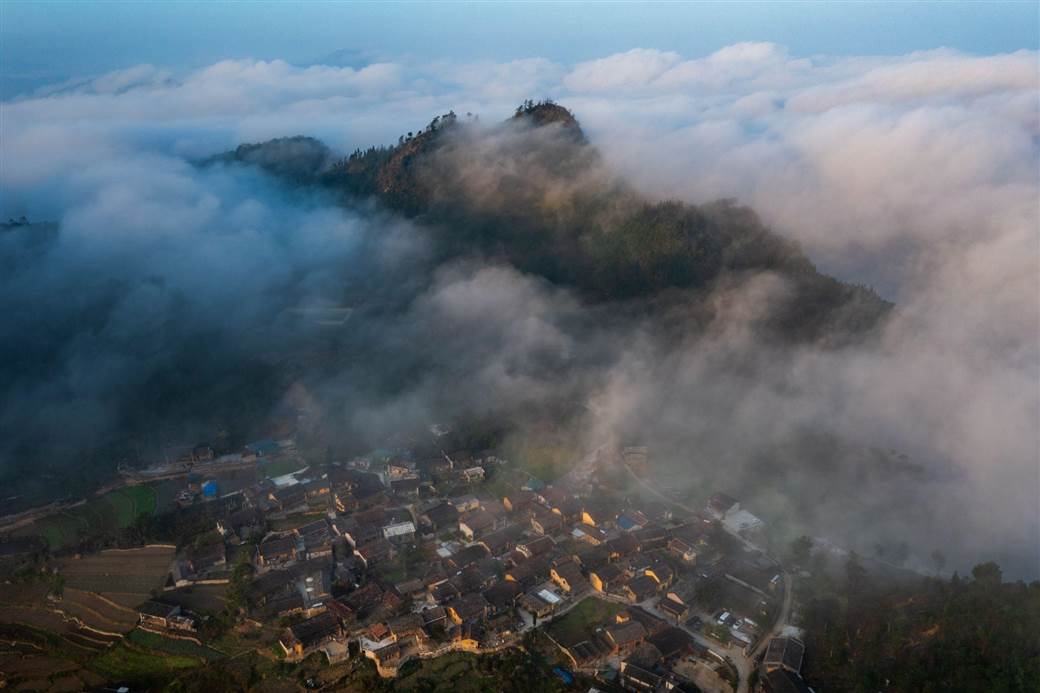
1.1 Rainfall Patterns and Temperature Range
Ha Giang’s rainfall distribution follows a clear pattern throughout the wet season. June through August typically receives the heaviest precipitation, with average monthly rainfall exceeding 300mm (12 inches). These summer months can see rain falling for up to 15-20 days each month, though rarely continuously throughout the day. Instead, mornings often start clear before clouds build by midday, with afternoon showers common and occasionally continuing into the evening.
The rain intensity varies widely – from gentle, atmospheric drizzle that creates photogenic mist around limestone peaks, to sudden, heavy downpours that can temporarily flood low-lying areas. Despite the increased precipitation, daytime temperatures remain warm, rarely dropping below 24°C (75°F) even during rain events. This combination of warmth and moisture creates high humidity levels of 80-90%, which can make even light activities feel more strenuous than in the dry season.
Nighttime brings modest cooling, with temperatures typically falling to 18-22°C (64-72°F), creating comfortable sleeping conditions, especially in higher elevation areas like Dong Van Plateau. The most significant temperature variations occur with elevation changes – travelers ascending the province’s many mountain passes will notice distinct temperature drops with each hundred meters gained. This creates microclimates throughout the loop, where conditions might shift dramatically between valleys and peaks within a single day’s journey.
1.2 Regional Differences in Rainfall
Ha Giang’s complex topography creates notable variations in rainfall patterns across the province. The southwestern districts, including Vi Xuyen and Bac Me, typically receive more consistent precipitation than the northern karst plateau. This creates a situation where travelers might encounter completely different weather conditions as they traverse the loop from south to north or vice versa.
The famed Dong Van Karst Plateau Geopark, with its dramatic limestone formations, experiences a somewhat moderated rainfall pattern compared to lower elevations. Its elevated position (1,000-1,600 meters above sea level) means precipitation sometimes falls as mist rather than heavy rain, creating atmospheric conditions perfect for photography. However, this same elevation makes the plateau prone to sudden fog banks that can significantly reduce visibility, especially in early mornings or after rainfall.
River valleys, particularly along the Nho Que River near Ma Pi Leng Pass, can experience their own microclimate, where morning mist rises from the water as temperatures increase. These valleys sometimes trap moisture, creating extended periods of light drizzle even when surrounding highlands have cleared. Conversely, they can also channel winds that quickly disperse rain clouds, sometimes creating surprising pockets of sunshine amid otherwise wet days.
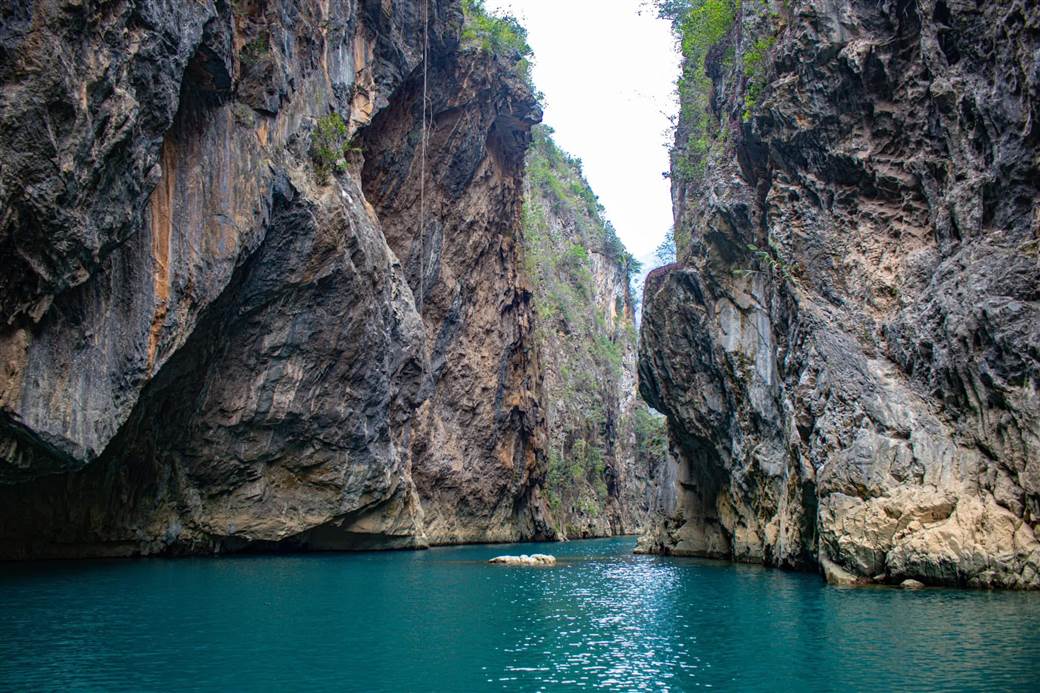
The Ultimate Ha Giang Loop Guide (2025): Itinerary, Map & Tips
2. When Is the Rainy Season in Ha Giang Loop?
Ha Giang’s rainy season officially extends from May through September, with the most intense precipitation typically occurring in July and August. This five-month period brings approximately 80% of the region’s annual rainfall, transforming landscapes and significantly affecting road conditions throughout the famous loop. Weather patterns shift gradually rather than abruptly, with May and September serving as transitional months where rain events become increasingly or decreasingly frequent, respectively.
Travelers planning trips during these months should prepare for precipitation but understand that rain rarely falls continuously throughout the day. Even during peak rainy season, mornings often start clear, with clouds building gradually and precipitation typically concentrated in afternoon or evening hours. This pattern means early risers can still enjoy spectacular views and dry road conditions for at least part of their journey each day.
The counterpoint to this wet period is Ha Giang’s dry season from October through April, when precipitation drops dramatically and clear skies dominate. These months offer more predictable travel conditions but miss the lush, verdant landscapes that make the rainy season so visually striking. Understanding these seasonal differences helps travelers make informed decisions about when to visit, balancing the desire for spectacular green scenery against concerns about road safety and comfort.
2.1 Rainy vs. Dry Season (Key Dates)
Ha Giang’s climatic year divides clearly between wet and dry periods, with relatively predictable transition points. The dry season runs from October through April, characterized by minimal rainfall, cooler temperatures, and exceptional visibility across mountain landscapes. During these months, precipitation averages just 25-50mm (1-2 inches) monthly, with many days experiencing no rainfall whatsoever. This creates ideal conditions for motorbiking but also means landscapes appear more muted, with terraced fields often lying fallow or showing earthen tones rather than vibrant greens.
The transition to rainy season typically begins in late April or early May, marked by increasing humidity and isolated afternoon thunderstorms. By mid-May, regular rainfall patterns establish themselves, with precipitation gradually increasing through June. July and August represent the peak of the rainy season, when monthly rainfall often exceeds 300mm (12 inches) and rain events occur every few days. This period sees Ha Giang at its lushest, with rice terraces brilliantly green and waterfalls at maximum flow.
September marks the beginning of the transition back to dry conditions, though substantial rainfall still occurs. By late September or early October, precipitation frequency drops noticeably, and the legendary “golden season” begins, when terraced rice fields turn amber before harvest. This transitional period often offers the best balance between manageable road conditions and spectacular scenery, making it particularly popular among photographers and experienced riders.
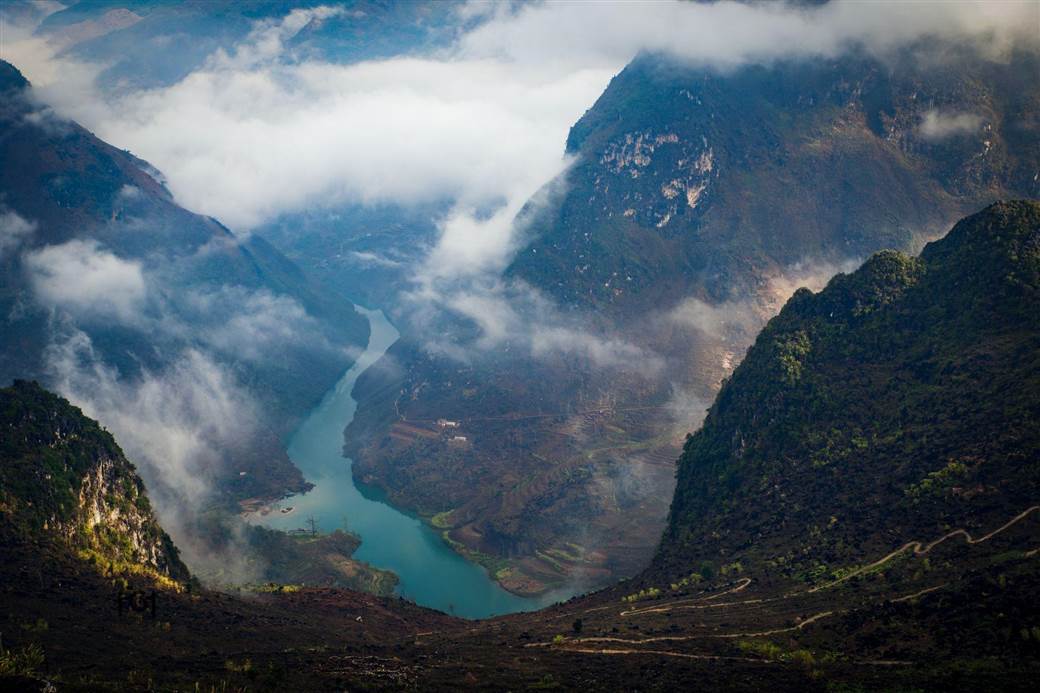
Ha Giang in April: Where to Go, What to Do, Where to Eat
2.2 Month-by-Month Weather Summary
- January-February: The heart of dry season brings cool, clear conditions with daytime temperatures between 15-20°C (59-68°F) and nights often dropping to 8-12°C (46-54°F). Rainfall is minimal, averaging just 15-25mm (0.6-1 inch) monthly. Morning fog can temporarily reduce visibility in valleys but typically burns off by mid-morning. Road conditions are excellent, though early mornings and evenings require warm clothing, especially at higher elevations.
- March-April: Late dry season brings gradually warming temperatures, with daytime highs reaching 22-28°C (72-82°F). Rainfall remains low but increases slightly as April progresses. These months feature excellent visibility for landscape photography and comfortable riding conditions. Mountain passes occasionally experience morning mist, but roads remain predominantly dry and easily navigable. Vegetation begins showing hints of green as spring arrives.
- May: The transition month brings increasing rainfall, averaging 150-200mm (6-8 inches), typically falling as afternoon showers. Temperatures warm to 25-30°C (77-86°F) during the day with humidity levels rising noticeably. Landscapes begin their dramatic transformation as rice planting begins and vegetation responds to increased moisture. Roads remain generally passable but may occasionally experience short-term flooding during heavy downpours.
- June-August: Peak rainy season brings the heaviest precipitation, with monthly rainfall of 250-350mm (10-14 inches). Rain patterns typically feature afternoon and evening downpours, though multi-day rain events become possible. Daytime temperatures range from 28-32°C (82-90°F) with high humidity. Landscapes reach peak lushness, with rice terraces vividly green and waterfalls spectacularly active. Road conditions become challenging, with increased risk of landslides and flooding, particularly on unpaved sections.
- September: Transitional weather brings gradually decreasing rainfall, though precipitation remains significant at 150-250mm (6-10 inches). Temperatures begin moderating slightly, especially at night. Rice terraces start showing hints of gold as harvest approaches. Road conditions improve compared to peak rainy season but remain challenging after heavy downpours. Morning fog becomes increasingly common, creating atmospheric photography conditions.
- October-December: Return to dry season brings rapidly decreasing rainfall and cooler temperatures. October features golden rice terraces before harvest, while November introduces the buckwheat flower season in Dong Van. December begins the coolest period, with temperatures dropping noticeably, especially at night. Road conditions are excellent throughout, with minimal risk of weather-related hazards. Clear skies dominate, offering spectacular visibility across Ha Giang’s mountainous landscapes.
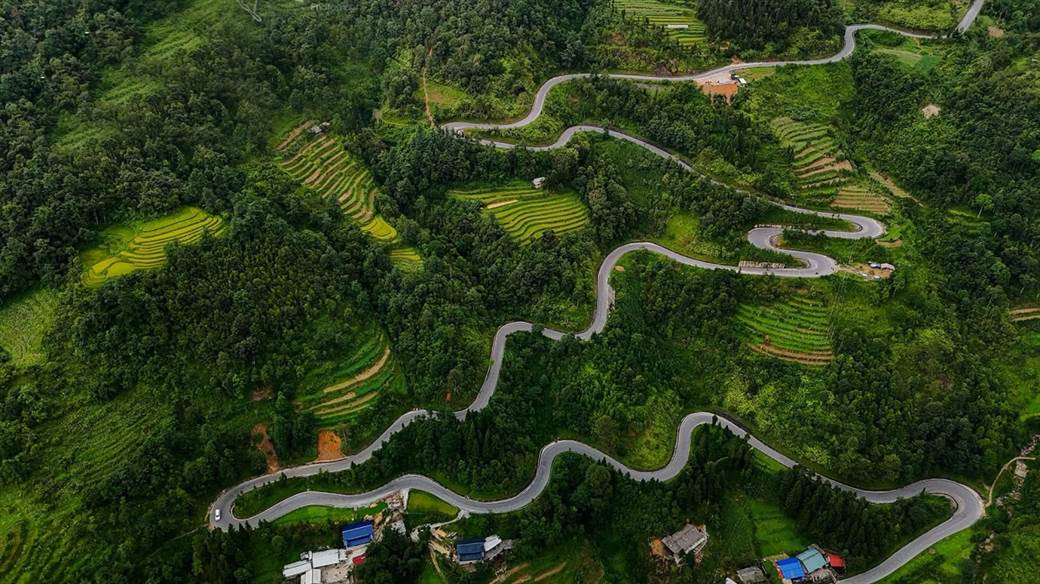
Ha Giang weather by month complete local guide for travelers
3. How the Rainy Season Transforms Ha Giang’s Landscapes
The rainy season works a profound transformation on Ha Giang’s already spectacular scenery. What appears as rugged, sometimes stark limestone formations during dry months softens under the influence of moisture, with mist wrapping around karst peaks and vegetation bursting into vibrant life. This metamorphosis is particularly dramatic across the rice-growing regions, where terraced fields transition from bare earth to luminous green carpets that follow the contours of hillsides and valleys.
Water becomes a dominant visual element throughout the landscape. Streams that barely trickle during dry months transform into rushing torrents, while seasonal waterfalls reactivate, sending white ribbons cascading down mountainsides. The Nho Que River, already impressive year-round, gains volume and velocity, its emerald waters cutting more dramatically through the limestone gorges that frame it.
This seasonal change creates both challenges and opportunities for travelers. Roads require more careful navigation, but the visual rewards can be extraordinary. Photographers find endless inspiration in the interplay of light, water, and mist, while nature enthusiasts encounter ecosystems at their most vibrant and diverse. Even the colors change – the palette shifts from the muted browns and greys of the dry season to rich greens accented by the vivid colors of seasonal wildflowers and agricultural crops.
3.1 Rice Terraces and Waterfalls
Rice terraces undergo their most dramatic annual transformation during the rainy season. Beginning with planting in May and June, the previously bare, earthen steps fill with water, creating mirror-like surfaces that reflect the sky and surrounding mountains. As rice seedlings emerge and mature through July and August, the terraces transform into vibrant green staircases ascending mountainsides. This progression creates what many consider Ha Giang’s most photogenic period, when morning light illuminates countless emerald tiers stretching across hills and valleys.
The effect is particularly striking in areas like Hoang Su Phi and Xin Man districts, where some terraces rise over 1,000 meters from valley floor to mountain ridge. Here, the morning mist common during rainy season creates ethereal scenes as it drifts between rice levels, partially revealing and concealing the intricate agricultural architecture. Unlike the dry season, when many terraces lie fallow, the rainy months showcase these UNESCO-recognized landscapes at their functional prime, demonstrating the harmonious relationship between local ethnic communities and their mountainous environment.
Waterfalls throughout the province regain their power and majesty during these wet months. Year-round falls like Love Waterfall near Tham Ma Pass increase in volume dramatically, while dozens of seasonal cascades reappear across the landscape. The continuous moisture nourishes lush vegetation around these water features, creating microhabitats rich with ferns, mosses, and flowering plants. For photographers, the challenge of capturing these dynamic water elements in varying light conditions – from diffused cloudy illumination to brief moments of dramatic sunlight breaking through clouds – offers creative opportunities unique to the rainy season.
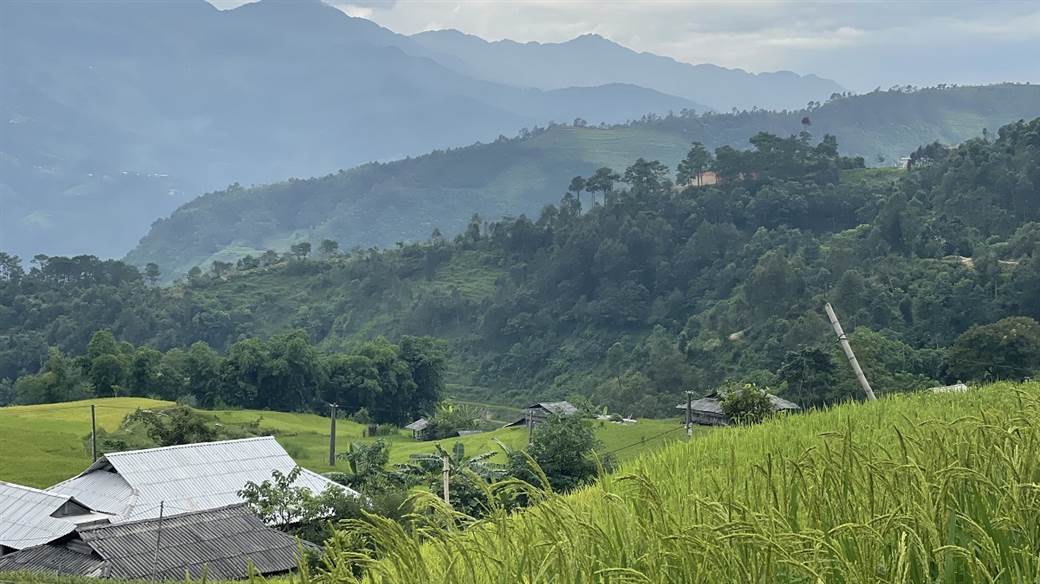
3.2 Unique Scenery & Photography Tips
The rainy season transforms Ha Giang into a photographer’s paradise, offering atmospheric conditions impossible to witness during drier months. Mornings frequently begin with valley fog and low clouds drifting between karst peaks, creating layered compositions as limestone formations emerge partially from the mist. This phenomenon is particularly striking around Dong Van and Lung Cu, where higher elevations interact with moisture-laden air to produce dreamy, ethereal landscapes that change by the minute as sunlight strengthens.
Capturing these conditions requires some technical adaptation. The diffused light created by cloud cover actually benefits photography by reducing harsh shadows and contrast, allowing for more balanced exposures. However, the higher humidity necessitates protecting equipment from condensation, particularly when moving between air-conditioned accommodations and the warm, moist outdoor environment. Carrying silica gel packets and allowing equipment to acclimatize gradually can prevent fogging issues that might otherwise compromise image quality.
The dramatic cloud formations common during the rainy season create opportunities for landscape photographs with extraordinary depth and drama. When afternoon clouds build over mountain ranges, they frequently create layered scenes with striking light breaks as sunbeams penetrate through gaps. These conditions are especially rewarding at viewpoints like Ma Pi Leng Pass, where the vast scale of the landscape combines with atmospheric conditions to create images with remarkable emotional impact. For best results, schedule photography sessions for early morning (5:30-8:00 AM) when mist is most prevalent and late afternoon (4:00-6:30 PM) when storm clouds often create the most dramatic lighting conditions.
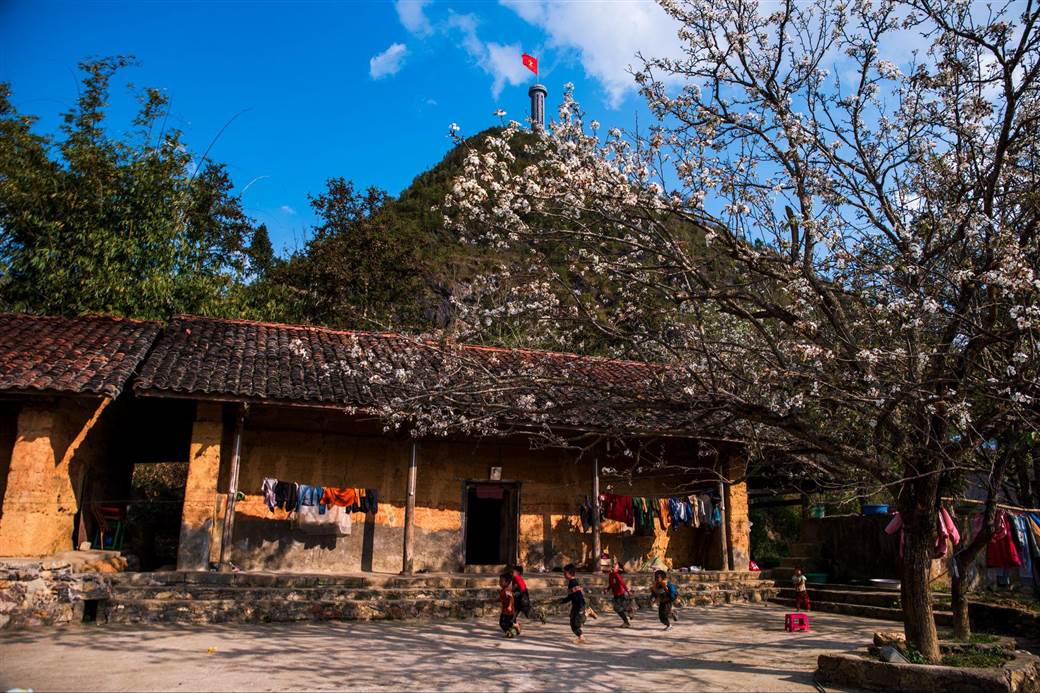
4. Is It Safe to Visit Ha Giang During the Rainy Season?
Traveling Ha Giang during the rainy season presents genuine safety considerations that require honest assessment. While thousands of visitors navigate the loop successfully during wet months each year, the increased precipitation undeniably elevates certain risks, particularly for motorbike travelers. Road conditions deteriorate, with unpaved sections becoming slippery and paved roads occasionally experiencing flooding or debris. Landslides, while relatively uncommon, do occur, especially after prolonged heavy rainfall on steep mountain slopes.
Despite these challenges, visiting during the rainy season remains viable for properly prepared travelers who maintain flexibility in their itinerary. The key lies in understanding that safety depends largely on adaptive planning and responsible decision-making. Experienced riders with proper equipment navigate these conditions regularly, while those with limited motorbike experience might consider alternative transportation options, such as hiring local drivers familiar with seasonal road challenges.
Phieu Travel emphasizes that rainy season safety requires more cautious scheduling. Building extra time into itineraries allows travelers to wait out heavy downpours rather than riding through dangerous conditions. Likewise, remaining flexible about accommodation – being willing to stop earlier than planned if conditions deteriorate – prevents many weather-related incidents. With proper preparation and realistic expectations, the rainy season’s unique beauty can be experienced safely, though travelers should honestly assess their comfort level with the increased challenges.
4.1 Road Conditions and Risks (Floods, Landslides)
During the rainy season, Ha Giang’s road network faces several specific challenges that travelers should understand before committing to the journey. Paved sections of the loop generally remain passable even during heavy rainfall, though surface water can reduce traction and visibility. More significant concerns arise on unpaved segments, particularly in remote areas between Meo Vac and Du Gia, where clay-rich soil becomes extremely slippery when wet. These sections may require reduced speed and increased caution, especially for less experienced riders.
Water crossings present another consideration, as seasonal streams that barely register during dry months can become significant obstacles after heavy rain. Deeper crossings should be approached with extreme caution or avoided entirely during high water, as currents can be deceptively strong. Similarly, low-lying road sections occasionally experience flash flooding, particularly in valley bottoms where runoff concentrates. These areas typically clear relatively quickly after rain stops but may temporarily halt travel.
Landslides represent the most serious though least common hazard. They occur primarily after extended heavy rainfall saturates steep slopes along road cuts. The highest risk areas include sections near Ma Pi Leng Pass and parts of the road between Quan Ba and Yen Minh, where the combination of steep terrain and road construction has created potentially unstable conditions. Recent infrastructure improvements have reduced these risks through retaining walls and drainage systems, but caution remains essential during and immediately following heavy precipitation events.
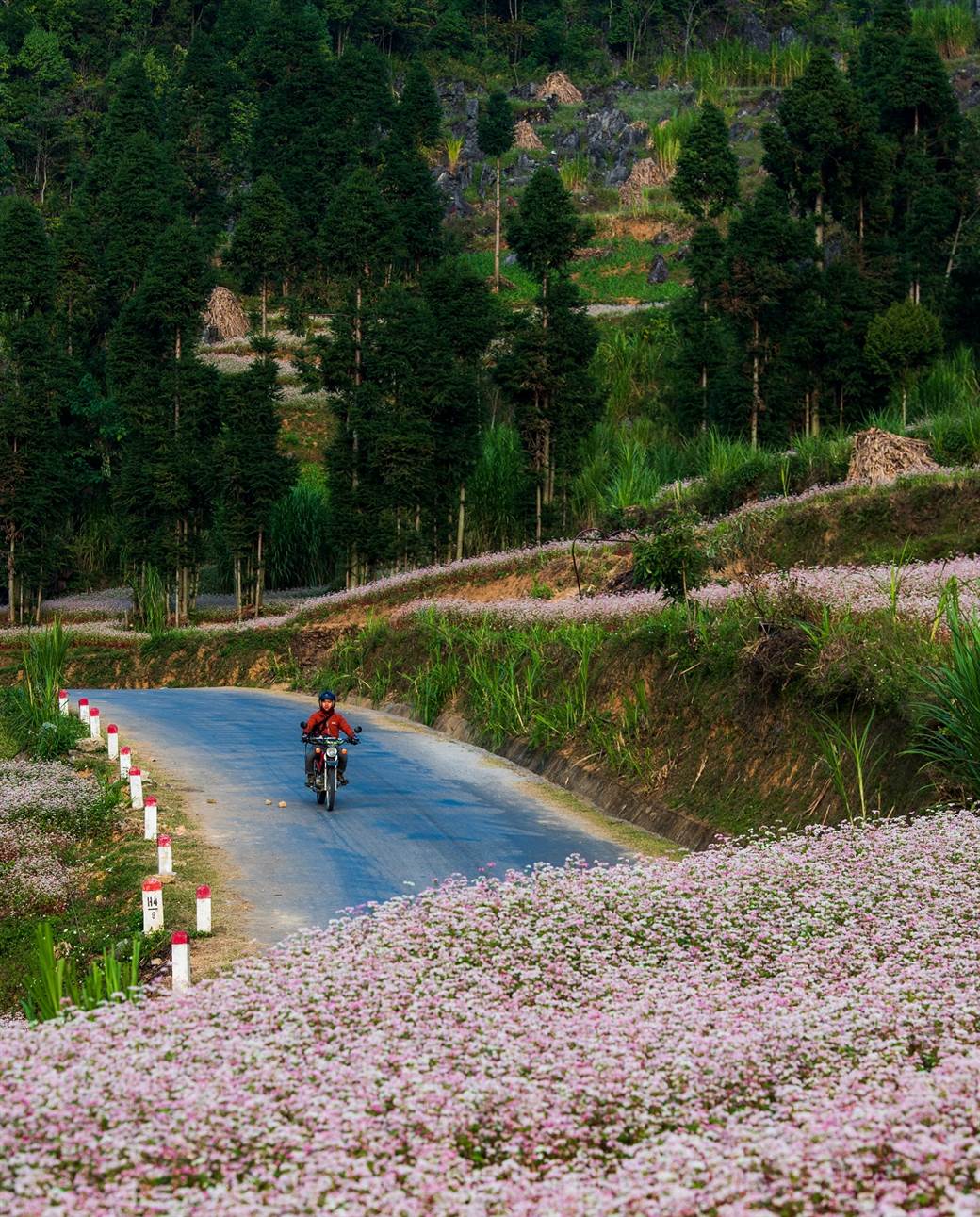
4.2 Essential Safety Tips
- Monitor weather forecasts diligently: Before setting out each day, check reliable weather apps or consult with local accommodations about expected conditions. Multiple resources provide more reliable information than any single source. Phieu Travel guides continuously monitor weather patterns and can advise on route modifications when necessary.
- Adopt appropriate riding techniques: On wet roads, reduce speed by at least 30% compared to dry conditions. Maintain greater following distances, brake gently and earlier than normal, and avoid sudden movements or sharp turns. When encountering standing water, proceed slowly through the shallowest section visible, maintaining steady throttle and avoiding braking.
- Enhance visibility with proper gear: During rainy conditions, visibility decreases substantially for both riders and other vehicles. Wear bright or reflective clothing, ensure your headlight functions properly even during daylight hours, and consider adding reflective tape to your motorbike or helmet. Quality rain gear not only keeps you dry but typically includes reflective elements that improve your visibility to others.
- Time your travel strategically: Plan daily departures early (around 7:00 AM) when rainfall is typically lightest. Aim to reach your destination by mid-afternoon, before the heaviest precipitation usually begins. This approach maximizes riding during the statistically driest hours and provides buffer time if delays occur due to road conditions.
- Develop contingency plans: Before departing, identify potential shelter points along your route where you could wait out sudden heavy downpours. Note the locations of larger towns with accommodation options in case weather forces an unplanned overnight stop. Carry emergency contact information for local authorities and your accommodation providers.
- Maintain communication capabilities: Ensure your phone stays dry and charged for emergency communication. Consider waterproof pouches or cases, and bring a portable battery pack for recharging. While network coverage varies throughout Ha Giang, most major roads and towns maintain reasonable connectivity, allowing weather updates and emergency contact if needed.
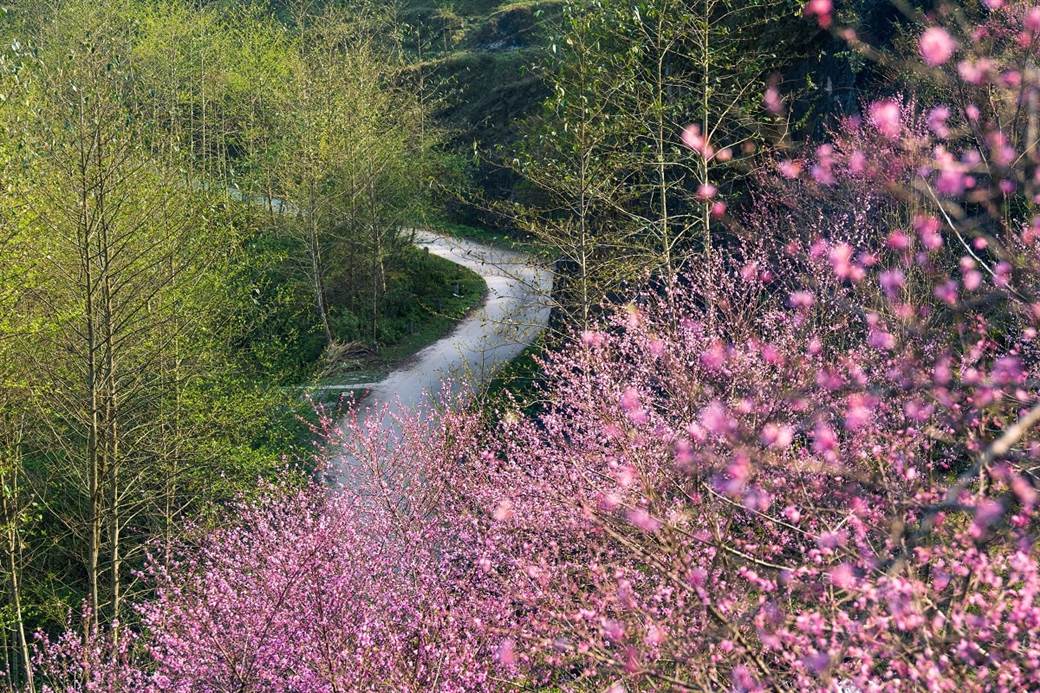
5. Packing & Preparation for Ha Giang’s Rainy Months
Successful navigation of Ha Giang during the rainy season depends heavily on thoughtful preparation and appropriate equipment. Unlike dry season travel, when minimal gear suffices, wet weather demands specialized items that protect both rider and belongings from persistent moisture. This preparation extends beyond simple rain protection to include considerations for changing temperatures, reduced visibility, and potentially limited access to services in remote areas affected by weather.
Waterproofing becomes a primary concern, not just for personal comfort but for protecting essential documents, electronics, and other valuables. Multiple layers of protection are advisable, with waterproof bags inside waterproof backpacks providing redundancy against the sometimes persistent precipitation. Equally important is selecting clothing that balances protection against rain with breathability that prevents overheating in Ha Giang’s warm, humid conditions.
Beyond physical equipment, mental preparation plays a crucial role. Travelers should approach the rainy season with realistic expectations about weather patterns, understanding that flexibility and patience become essential virtues. Building additional time into itineraries allows for waiting out heavy downpours or taking unexpected detours around problematic road sections. This combination of proper equipment and adaptable attitude creates the foundation for a successful rainy season experience.
5.1 Gear Checklist
- Quality rain gear: Invest in a breathable, fully waterproof jacket and pants set designed specifically for motorcycle riding. Look for features like sealed seams, waterproof zippers, and adjustable cuffs that prevent water entry. Avoid plastic ponchos, which can catch wind and create dangerous riding conditions. Bright colors or reflective elements enhance visibility in low-light conditions common during rainfall.
- Waterproof luggage solutions: Protect belongings with waterproof or highly water-resistant bags. Dry bags designed for kayaking or rafting work excellently for motorcycle travel. For smaller items, use ziplock bags inside waterproof cases. Consider multiple layers of protection for electronics, documents, and other water-sensitive items. Phieu Travel provides waterproof bag covers for all guests during rainy season tours.
- Appropriate footwear: Waterproof boots with good ankle support provide essential protection. Quick-drying trail shoes or sandals serve as excellent alternatives for off-bike activities. Avoid canvas shoes or materials that remain wet for extended periods. Pack at least two pairs to ensure you always have dry options available.
- Visibility enhancements: Clear or lightly tinted helmet visors improve vision in rainy conditions (avoid dark tints which further reduce already compromised visibility). Anti-fog treatments or pinlock inserts prevent visor fogging in humid conditions. Consider adding reflective tape to your helmet, motorbike, or luggage to increase visibility to other vehicles.
- Protection for electronics: Waterproof phone cases allow navigation and communication regardless of conditions. Bring additional power banks for recharging (humidity can increase battery drain). Consider silica gel packets to reduce moisture around cameras and electronic equipment when stored. Waterproof or water-resistant watches provide time reference without exposing phones to the elements.
- Quick-dry clothing layers: Pack lightweight, synthetic or merino wool layers that dry quickly when wet. Avoid cotton, which retains moisture and becomes heavy when saturated. Include long-sleeved options for sun protection during clear periods and additional warmth during evening temperature drops. Pack at least one change of dry clothes in waterproof storage accessible during the day’s ride.
5.2 Health & Comfort Tips
Prevent fungal infections: The combination of heat, humidity, and frequent wetting creates ideal conditions for fungal growth. Pack antifungal powder or cream to apply to susceptible areas. Change into dry socks and underwear whenever possible, even during brief stops. Consider moisture-wicking undergarments that dry quickly and reduce skin irritation from prolonged dampness.
Stay properly hydrated: Despite constant moisture in the environment, riders still need consistent water intake, especially given the high humidity that increases perspiration. Drink filtered or bottled water regularly throughout the day, ideally consuming 2-3 liters daily. Electrolyte supplements help replace minerals lost through increased sweating in humid conditions.
Protect against increased insect activity: Rainy season brings higher mosquito and insect populations, particularly during dawn and dusk hours. Pack effective insect repellent containing DEET or picaridin for application to exposed skin. Consider permethrin-treated clothing for longer-term protection. Include anti-itch cream or antihistamines for treating any bites that occur despite precautions.
Maintain body temperature regulation: Even in warm weather, prolonged exposure to rain can lead to lowered body temperature, especially when riding at higher speeds or elevations. Pack a lightweight thermal layer that retains warmth even when damp. During extended rain exposure, schedule more frequent stops to warm up with hot beverages, which Phieu Travel arranges at scenic viewpoints along the route.
Protect against increased sun exposure: Paradoxically, sun protection remains important during rainy season. UV rays penetrate cloud cover, and riders often forget protection during brief sunny periods between showers. Pack waterproof sunscreen (minimum SPF 30) and reapply after heavy rain exposure. Lip balm with sun protection prevents painful cracking from combined sun and wind exposure.
Prevent waterborne illness: Increased rainfall can affect water quality even in established accommodations. Stick strictly to bottled or properly treated water for drinking and brushing teeth. Be particularly cautious with fresh vegetables or fruits that may have been washed in untreated water. Consider probiotic supplements to strengthen digestive resistance against potential contaminants.
6. Top Festivals and Local Life During the Rainy Season
Ha Giang’s rainy months coincide with significant agricultural activities and cultural celebrations among the province’s ethnic communities. This period marks important transitions in the farming calendar, particularly for rice cultivation, which forms the backbone of local subsistence. As fields transform from bare earth to vibrant green carpets, communities engage in planting rituals and cooperative labor exchanges that visitors rarely witness during the more tourist-heavy dry season.
Several noteworthy festivals occur during these months, providing authentic cultural experiences for travelers willing to brave occasional weather challenges. These celebrations often combine agricultural significance with spiritual practices, offering insights into the deep connection between local communities and their natural environment. Visitors who time their trips to coincide with these events gain privileged glimpses into traditions that have shaped Ha Giang’s cultural landscape for generations.
Beyond organized festivals, rainy season visitors experience a different rhythm of daily life throughout the province. Markets bustle with seasonal produce unavailable other times of year, while craft activities like weaving and embroidery move indoors during rainy afternoons. This period allows for more meaningful interactions with local communities, who often have more time for conversation and cultural exchange during agricultural lulls between planting and harvest seasons.
6.1 Rice Planting Festivals and Ceremonies
The Lung Tao Rice Planting Festival in June stands among the most significant cultural events during Ha Giang’s rainy season. Primarily celebrated by the Red Dao community near Dong Van, this festival combines agricultural necessity with spiritual traditions dating back centuries. Elaborately dressed participants gather in ceremonial procession before moving to prepared fields, where community elders perform rituals seeking blessings from ancestral spirits and nature deities. These ceremonies include offerings of rice wine, incense, and specially prepared foods meant to ensure a bountiful harvest.
Following ritual components, practical planting begins in a festive atmosphere. Community members work together transplanting rice seedlings while singing traditional work songs that establish rhythm and build solidarity. Visitors are often invited to participate, gaining hands-on experience with traditional farming methods that remain largely unchanged for generations. This participatory aspect creates meaningful cultural exchange opportunities rarely available during more commercialized festivals of the dry season.
The Green Rice Festival (Lễ Cốm) in August celebrates the first harvest of young sticky rice, considered a delicacy throughout northern Vietnam. Primarily observed in Quan Ba district, this festival features the creation of cốm (young green rice flakes) through traditional pounding and sieving methods. Community gatherings include music performances, folk games, and shared meals featuring the freshly prepared green rice. For visitors, this festival offers unique culinary experiences alongside cultural insights, though participation requires flexibility as exact dates vary annually based on rice maturation schedules.
6.2 Rainy Season Markets and Local Activities
Khau Vai Love Market represents one of the region’s most unique cultural events, held annually in early rainy season (typically late May). Unlike standard commercial markets, this gathering in Meo Vac district serves primarily as a reunion opportunity for former couples separated by circumstances or family arrangements. According to tradition, once each year, these individuals may meet to reminisce regardless of current marital status. While the romantic aspect remains somewhat private, the surrounding festival creates a vibrant atmosphere with traditional music, dance performances, and special market activities.
The rainy season transforms Ha Giang’s regular markets as well, introducing seasonal foods and agricultural products absent during drier months. Wild mushrooms, forest vegetables, and medicinal herbs appear in abundance, harvested from mountainsides newly lush with moisture. Markets in Dong Van, Meo Vac, and Ha Giang City become particularly colorful on Sundays, when ethnic minorities from surrounding villages bring handcrafted items and agricultural surplus for trade. The atmosphere grows especially vibrant during brief rain breaks, when vendors and shoppers alike emerge from shelter to conduct business under clearing skies.
Indoor craft activities flourish during this season, with many households focusing on textile production and other traditional crafts during rainy afternoons. Visitors can arrange experiences through Phieu Travel to learn embroidery techniques from Hmong artisans, indigo dyeing processes from Dao communities, or brocade weaving from Tay practitioners. These sessions typically include tea and conversation, allowing deeper cultural exchange than possible during busier dry season months. Many homestays incorporate these activities naturally into the guest experience, creating memorable interactions regardless of outdoor weather conditions.
7. FAQs About Ha Giang Loop in Rainy Season
Ha Giang’s rainy season, from May to September, brings dramatic changes to its landscapes and travel conditions. While afternoon showers and occasional landslides require extra caution, the season also offers lush greenery, misty mountains, and unique cultural experiences that make visiting this northern province a rewarding adventure.
When is the rainy season in Ha Giang?
Ha Giang’s rainy season typically extends from May through September, with July and August experiencing the heaviest precipitation. During these peak months, rainfall averages 250-350mm (10-14 inches), primarily falling as afternoon and evening showers rather than continuous precipitation. May and September serve as transitional months with gradually increasing or decreasing rainfall, respectively. Despite being the “rainy” season, completely dry days still occur regularly throughout this period, especially during morning hours when most precipitation hasn’t yet developed.
Is it safe to visit Ha Giang during the rainy season?
Visiting Ha Giang during the rainy season remains generally safe for properly prepared travelers who maintain flexible itineraries. Road conditions do deteriorate, with increased risk of minor flooding and occasional landslides after heavy downpours, particularly on unpaved sections and mountain passes. Safety largely depends on responsible decision-making – waiting out heavy rain rather than riding through it, adjusting daily distances to accommodate slower travel speeds, and being willing to modify routes if specific road sections become problematic. Less experienced motorcyclists should consider hiring local drivers familiar with seasonal conditions or joining guided tours like those offered by Phieu Travel, where professional guides continuously monitor conditions and adjust itineraries accordingly.
What should I pack for the rainy season in Ha Giang?
Essential rainy season packing includes quality motorcycle-specific rain gear (jacket and pants with sealed seams), waterproof luggage solutions (dry bags work excellently), quick-drying synthetic clothing layers, and waterproof footwear with good traction. Protection for electronics becomes crucial – waterproof phone cases, camera rain covers, and multiple layers of waterproofing for essential documents. Health items should include insect repellent (mosquito activity increases with moisture), antifungal powder or cream (for preventing skin issues in humid conditions), waterproof sunscreen (UV penetrates clouds), and electrolyte supplements to maintain hydration. Phieu Travel provides guests with waterproof bag covers and can arrange rental of quality rain gear upon request.
What are the main attractions or activities during the rainy season?
The rainy season transforms Ha Giang’s landscapes into their most photogenic state, with emerald-green rice terraces, powerful waterfalls, and atmospheric mist wrapping around limestone peaks. Photography opportunities become exceptional, particularly for capturing dramatic cloud formations and misty morning scenes. Cultural activities include seasonal festivals like the Lung Tao Rice Planting Festival (June) and Green Rice Festival (August), which showcase agricultural traditions rarely witnessed during drier months. Indoor craft demonstrations become more accessible as communities focus on textile production and other traditional arts during rainy afternoons. Boat rides on the Nho Que River offer magnificent perspectives of swollen waterways cutting through limestone gorges, while visits to local markets reveal seasonal delicacies unavailable during drier months.
8. Embracing Ha Giang’s Rainy Season Beauty
The rainy season reveals Ha Giang at its most authentic and visually striking. While the increased precipitation brings undeniable challenges, it also transforms the landscape into a photographer’s paradise of verdant terraces, mist-wrapped mountains, and dramatic skies. For travelers willing to adapt their expectations and preparation, these wet months offer rewards that dry-season visitors never experience – from the brilliant green of newly-planted rice fields to the powerful flow of seasonal waterfalls.
Successfully navigating Ha Giang during this period requires a combination of proper equipment, flexible planning, and realistic expectations. The occasional inconvenience of waiting out a downpour becomes insignificant compared to the privilege of witnessing landscapes at their most lush and vibrant. With proper rain gear, waterproof storage solutions, and a positive attitude, the obstacles become merely part of the adventure rather than impediments to enjoyment.
Phieu Travel specializes in helping visitors experience Ha Giang safely and comfortably throughout all seasons, including the atmospheric rainy months. Our guides’ intimate knowledge of local conditions ensures adaptable itineraries that maximize experiences while minimizing risks. Whether you’re drawn to photographing mist-shrouded karst formations, participating in rice planting ceremonies, or simply experiencing the famous loop without the dry-season crowds, we can customize your journey to embrace the unique beauty that only the rainy season in Ha Giang can offer. Visit Phieutravel.com to learn more about our specialized rainy season tours and prepare for an unforgettable northern Vietnam adventure.
Read more:
- Worst time to do the Ha Giang Loop safety stories 2025
- The Best Time to Visit Ha Giang: A Seasonal Guide to Flowers & Festivals
- Ha Giang Loop in july weather adventure & travel guide 2025

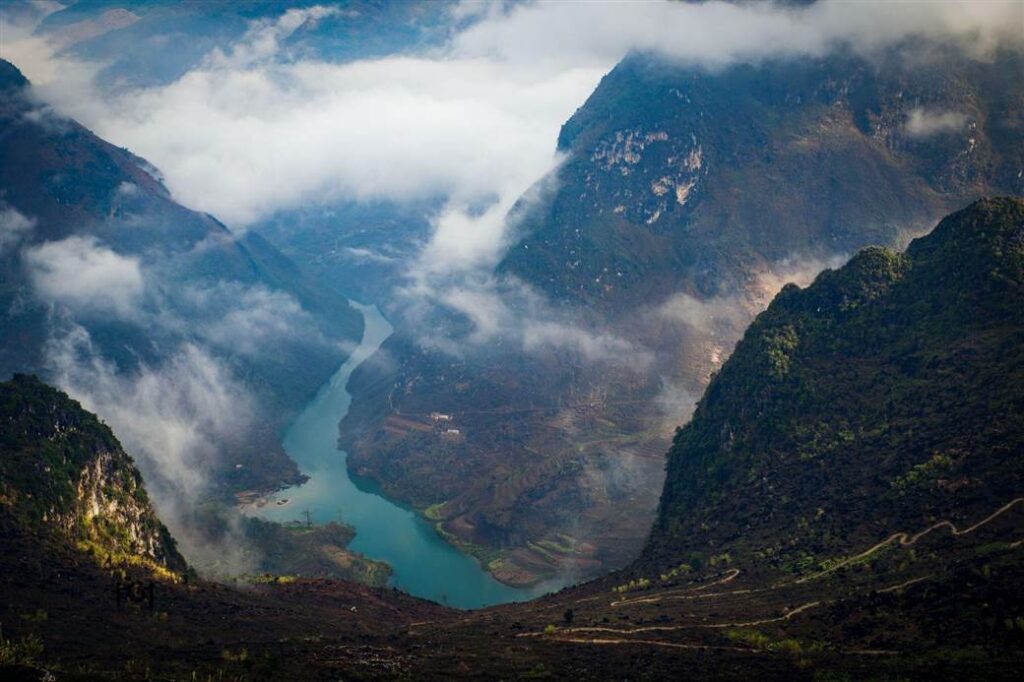
You Might Also Like
Ha Giang Weather in September: Complete Guide for Travelers
Exploring the magnificent Ha Giang Loop in September offers travelers a perfect balance of favorable[...]
Quan Ba Twin Mountains: Ha Giang’s Iconic Fairy Hills and Complete Travel Guide
The mystical Quan Ba Twin Mountains rise from the emerald valleys of Ha Giang like[...]
Vuong family mansion: the architectural marvel and cultural legacy of Ha Giang
Deep in Vietnam’s northern highlands, where mist-shrouded mountains meet terraced rice fields, stands a testament[...]
Ha Giang Loop Safety Tips: How to Ride Securely in Vietnam’s Northern Mountains
The Ha Giang Loop, with its winding mountain roads and breathtaking landscapes, offers one of[...]
The Ultimate Guide to the M-Shaped Curve on Ha Giang Loop
Vietnam’s remote northern province of Ha Giang hides a natural wonder that has captivated adventurous[...]
Most Beautiful Places to Visit in Vietnam: Essential Destinations and Insider Tips
Vietnam captivates travelers with its stunning landscapes, rich cultural heritage, and warm hospitality. From mist-shrouded[...]
Beyond the Beaten Path: Discovering Ha Giang Province in Northeast Vietnam
Ha Giang Province in Northeast Vietnam stands as one of the country’s last frontiers for[...]
Rainy season in Ha Giang: what to expect, when to go, and travel tips
Vietnam’s northern frontier reveals a different face during the rainy season, transforming Ha Giang’s limestone[...]